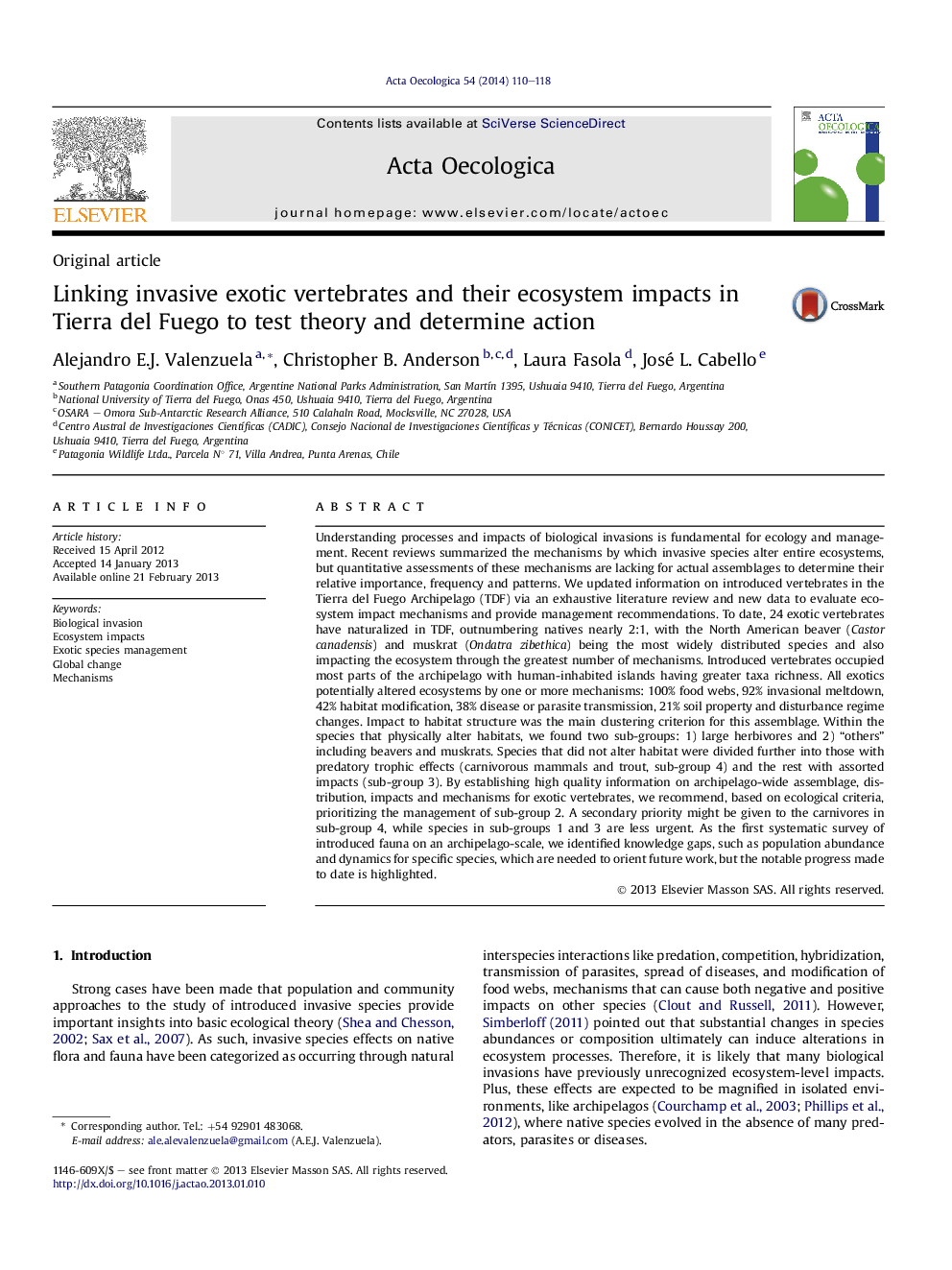| کد مقاله | کد نشریه | سال انتشار | مقاله انگلیسی | نسخه تمام متن |
|---|---|---|---|---|
| 4380848 | 1617717 | 2014 | 9 صفحه PDF | دانلود رایگان |

Understanding processes and impacts of biological invasions is fundamental for ecology and management. Recent reviews summarized the mechanisms by which invasive species alter entire ecosystems, but quantitative assessments of these mechanisms are lacking for actual assemblages to determine their relative importance, frequency and patterns. We updated information on introduced vertebrates in the Tierra del Fuego Archipelago (TDF) via an exhaustive literature review and new data to evaluate ecosystem impact mechanisms and provide management recommendations. To date, 24 exotic vertebrates have naturalized in TDF, outnumbering natives nearly 2:1, with the North American beaver (Castor canadensis) and muskrat (Ondatra zibethica) being the most widely distributed species and also impacting the ecosystem through the greatest number of mechanisms. Introduced vertebrates occupied most parts of the archipelago with human-inhabited islands having greater taxa richness. All exotics potentially altered ecosystems by one or more mechanisms: 100% food webs, 92% invasional meltdown, 42% habitat modification, 38% disease or parasite transmission, 21% soil property and disturbance regime changes. Impact to habitat structure was the main clustering criterion for this assemblage. Within the species that physically alter habitats, we found two sub-groups: 1) large herbivores and 2) “others” including beavers and muskrats. Species that did not alter habitat were divided further into those with predatory trophic effects (carnivorous mammals and trout, sub-group 4) and the rest with assorted impacts (sub-group 3). By establishing high quality information on archipelago-wide assemblage, distribution, impacts and mechanisms for exotic vertebrates, we recommend, based on ecological criteria, prioritizing the management of sub-group 2. A secondary priority might be given to the carnivores in sub-group 4, while species in sub-groups 1 and 3 are less urgent. As the first systematic survey of introduced fauna on an archipelago-scale, we identified knowledge gaps, such as population abundance and dynamics for specific species, which are needed to orient future work, but the notable progress made to date is highlighted.
► We assess exotic vertebrates' ecosystem impacts and mechanisms in Tierra del Fuego.
► Exotic vertebrate assemblage and its management prioritization were updated.
► Exotic species occupied most of the islands and outnumbered natives nearly 2:1.
► All exotic vertebrates had the ability to affect ecosystems by at least one mechanism.
► Food web effects (100%) and habitat alteration (42%) were the most common pathways.
Journal: Acta Oecologica - Volume 54, January 2014, Pages 110–118